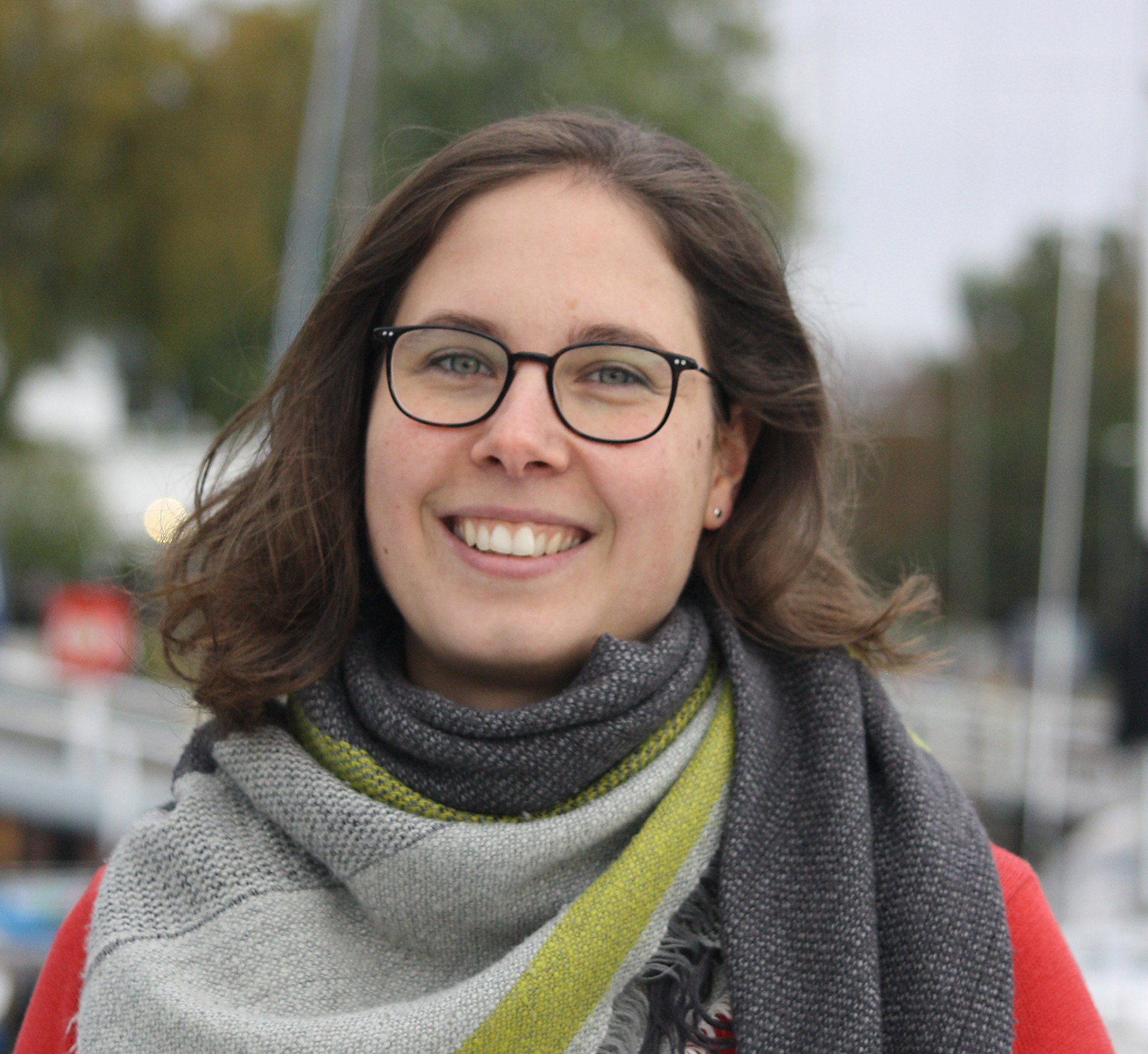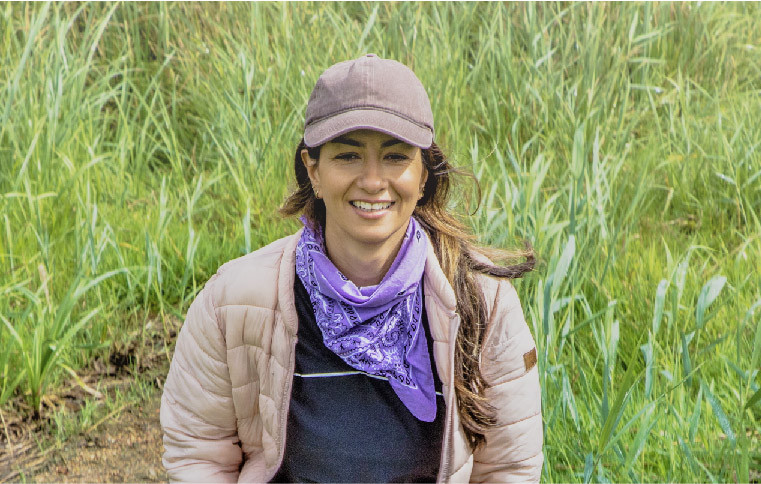



Germany plans to be carbon-neutral in 20-30 years. What would that look like though, in concrete terms? With her colleague Aram Kalhori and 35 other researchers from the Helmholtz Climate Initiative, Nadine Mengis took an unusual trip to the year 2050 – to an imaginary Germany that has reached “Net-Zero” and no longer contributes to climate change. The scientists did not need a crystal ball to do this. They used the backcasting approach, as Nadine Mengis explained to us.
Nadine, let’s imagine that we are in the year 2050 and are meeting here in Berlin. What does the world look like around us? How have our daily routines changed?
Nadine Mengis: Our standard of living is still as good as it was 30 years earlier, but now putting a climate-neutral lifestyle into practice has become much simpler. Our energy is essentially CO2-free as it comes from solar cells on building façades and rooftops, from windmills, and from sustainable biomass. Almost all residential buildings have electric heating and are well insulated. Likely the most noticeable difference in 2050 can be seen in the road traffic. Many of the electric cars that are still found on the roads belong to carsharing companies, and there are more trains and buses operating. Bicyclists will also notice some improvements – parking places for personal vehicles are essentially a thing of the past, so there is much more space on the road.
So, have we actually managed not to release any more emissions into the atmosphere?
Mengis: Well, we do still have some CO2 emissions. The key thing, though, is that we have reduced these emissions to the greatest extent possible. To this end, over the past three decades, Germany has expanded renewable energies as never before. In 2020, the energy sector still accounted for over 80 percent of our emissions. In 2050, that is no longer the case. Thanks to the transformation of the energy supply, emissions in industry, households, and transport have also fallen drastically.
Cutting emissions in the production of cement and steel or in long-distance and heavy-duty transport was somewhat more complicated. However, hydrogen and green synthetic fuels allowed us to significantly reduce these emissions. In agriculture, much less fertilizer is used, and the soil is handled in such a way that more carbon is preserved in the soils. Today, our emissions have shrunk to less than ten percent of what they were in 2020. We are now taking responsibility for the remainder of our “CO2 waste” and accordingly removing it from the atmosphere.




A waste disposal system for CO2 in the air – how can you picture that?
Mengis: First of all, in Germany, we have expanded and thus increased the capacity of naturally occurring CO2 sinks, meaning ecosystems where carbon can be stored naturally – like the soil I just mentioned. In the past, many fields lay fallow – today, that is no longer the case. Instead, farmers grow cover crops on their fields, which store CO2 in their biomass. In addition, agricultural peatlands have been rewetted and can now not only avoid CO2 emissions, but even store carbon for us. In her recent interview, my co-author Aram spoke to you about about this potential.
You’re right, that was fascinating. Does that mean that all of these measures ultimately got us to Net-Zero, meaning no more CO2 is being added to the atmosphere?
Mengis: Unfortunately not. All of these efforts together compensate for only about one-fourth of residual emissions. That is why we turned our focus to geological means of storing CO2. In our vision, bioenergy plants have been retrofitted with filters to capture CO2, which is then pushed into the bedrock beneath the North Sea. In addition, in 2050, every major office building will have a system that filters CO2 directly from the airflow in the heating, ventilation, or air conditioning systems and transport it to storage facilities via CO2 collection hubs. Implementing these measures cost us a pretty penny, but it was worth it. Letting climate change continue its course would have been much more expensive.
Let's take a look back at the year 2022. Thirty years ago, what were the most challenging problems that we had to solve?
Mengis: In fact, one of the issues was the lack of space. From renewable energies to rewetted soils to reforestation, many of the measures found themselves vying with other activities, and this dilemma also involved agriculture, and thus food production. For this reason, we had to involve farmers in the solution to the problem. The second major obstacle on the way to Net-Zero had to do with introducing technological measures for extracting and storing CO2. This meant covering investment and maintenance costs, regulating financial compensation for CO2 extraction, and drumming up social acceptance. In Germany, much of this was achieved only after other countries had set the example.
Of course, this is a fictitious vision that you have just shared. Let's beam ourselves back to reality. How can you claim to know what the future will look like in 28 years?
Mengis: Obviously, we don't know what it will look like. But when 37 experts for energy and industry modelling, hydrogen, energy storage, synthetic fuels, soil and plant science, peatlands, seagrass meadows, bioenergy plants, direct CO2 capture from the air, and CO2 transport and storage come together with experts in economics, social acceptance, and law, and all of them start imagining – on the basis of current scientific understanding – what Germany could look like in about 30 years, then only one thing is missing: someone to compile everything and balance it to Net-Zero. In our case, that someone was me.
Creating such a vision necessarily means making assumptions about what is and what is not likely to occur. What assumptions did you make?
Mengis: As you have probably gathered, our vision draws heavily on technological innovation. We assumed that there would be no major changes in people's individual behavior, meaning that their living space would remain the same, that they would continue to have quite mobile lifestyles, and that Germany’s economic performance would not decline. Plus, we were looking to cut and offset our CO2 emissions purely via domestic measures and not compensation somewhere else. Therefore, our vision only reached Net-Zero through CO2 extraction measures and geological storage. The big question for the future is whether this would be accepted here in Germany.
Certainly not all of these things that you envision are new thoughts for you. What did you find most surprising?
Mengis: The study has two results that have given me a lot of food for thought. First of all, I find the fact that the sum of the many natural-sink enhancement options that we have considered here is not enough to offset the residual CO2 emissions, thought-provoking. That means that if we add it all up – the gains from rewetting peatlands, reforestation of vacant agricultural areas, agricultural methods for increased CO2 storage in soils, restoration of seagrass meadows – they still cannot fully offset residual emissions of 60 Mt CO2 per year.
The second issue is the speed with which the energy system needs to be transformed. In this study, we assumed for the first time a CO2 emissions budget for Germany that would allow us to do our part in keeping global warming to below 1.5 degrees Celsius. We then used these remaining CO2 emissions as a basis to calculate the speed of transition for the energy system: We would need to expand renewable energy by 20 GW per year. Each year, we would thus need to push past all previous records.

This means that we need to expand renewable energies as quickly and intensely as possible?
Mengis: Exactly. Without this transformation, we can forget about Net-Zero CO2. Furthermore, in Germany we need to face the facts: The potential for expanding natural CO2 sinks in Germany is limited. We need to be transparent about the decisions we’re facing: Either we offset our CO2 emissions in other countries – “buying” our way out, so to speak – or all of us in Germany need to make drastic changes to our lifestyle. If we can't accept either of those options, then we need to speak fair and square about geological CO2 storage.